Garden furniture only came into its own when people had leisure time, which of course for the majority of humankind happened extremely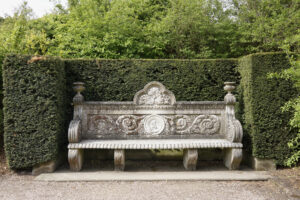 recently. The earliest examples of traditional garden furniture in history seem to come from ancient Egypt with evidence of pieces woven from Nile delta rushes. Less disputable evidence comes from wherever the Roman empire reached with ornate carved stone benches used in the gardens of nobles.
recently. The earliest examples of traditional garden furniture in history seem to come from ancient Egypt with evidence of pieces woven from Nile delta rushes. Less disputable evidence comes from wherever the Roman empire reached with ornate carved stone benches used in the gardens of nobles.
The earliest English indications that people even thought about sitting outside were the Turf banks, with brick walls and grass tops, which have appeared in various medieval paintings. From the Tudors right up until the 18th Century formal gardens for the nobility were solely designed for walking. Needless to say, the rest of the population had absolutely no time for sitting, any gardens were practical areas for growing food for survival.
It is in the 18th Century that the idea of the English Garden as a place to appreciate life seemed to have emerged.The great houses of England had parks built solely to be enjoyed for their beauty, by landscape artists such as Capability Brown. Further down the social scale new houses were built using space so they could shelter gardens on their south side. It gradually became more normal for a greater (still very small) proportion of the population to have gardens designed to be enjoyed for their planting of flowers and borders. It was into this environment that traditional garden furniture of all sorts began to appear.
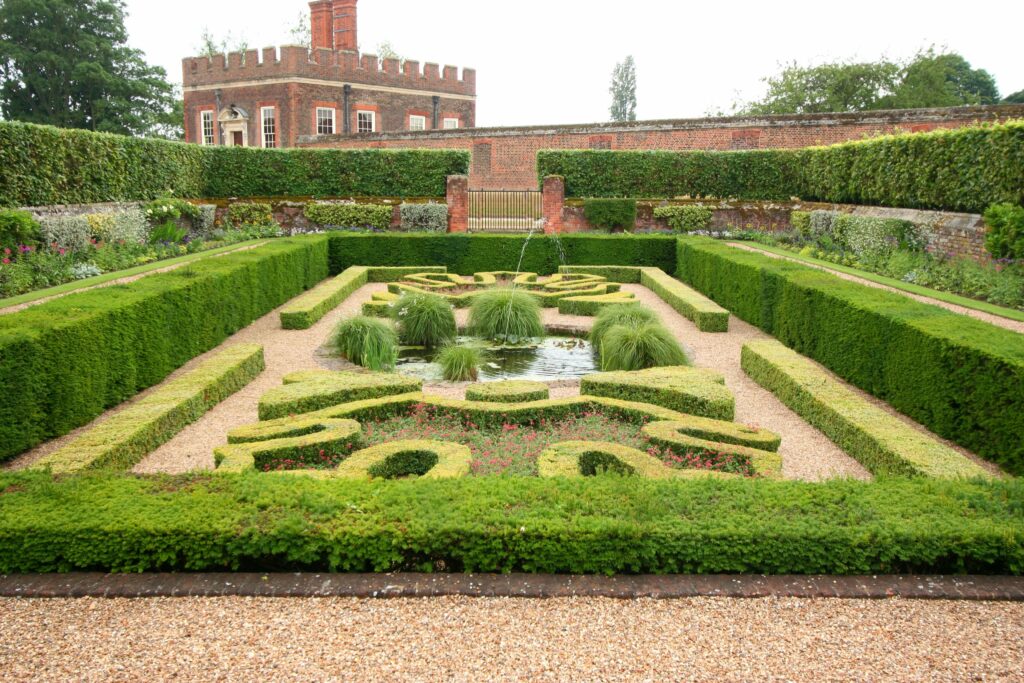
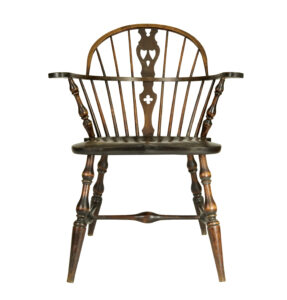
It is likely that the first pieces were made of Oak, a lot of everything in England was made of Oak, but of course the only reference to this are in occasional paintings. We definitely know that Teak, salvaged from broken up Indian merchant vessels was later used, as teak lasts a great deal longer outside than Oak. Evidence that the Windsor chair, a truly classic design, came into being at this time and may well have been so popular as it could easily be used outdoors.
Wrought iron came into the garden at this time firstly through its use in ornamental garden gates but then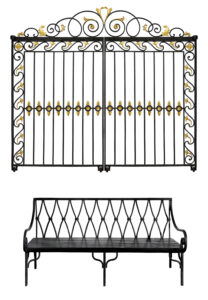 came benches of multiple designs. Makers of such pieces ranged from local blacksmiths and decorative workers in wrought iron to the craftsmen of Sheffield and Birmingham. These makers took their inspiration from famous interior furniture master craftsmen as the Chippendale, Hepplewhite, and Sheraton. A fine example was the Iron furniture made for Horace Walpole’s garden at Strawberry Hill. The adapting of designs associated with indoor furniture to that of the more durable iron for the garden is an early trend that continues to this day.
came benches of multiple designs. Makers of such pieces ranged from local blacksmiths and decorative workers in wrought iron to the craftsmen of Sheffield and Birmingham. These makers took their inspiration from famous interior furniture master craftsmen as the Chippendale, Hepplewhite, and Sheraton. A fine example was the Iron furniture made for Horace Walpole’s garden at Strawberry Hill. The adapting of designs associated with indoor furniture to that of the more durable iron for the garden is an early trend that continues to this day.
Gradually as sand casting of iron became more widespread and expert, cast iron took over from wrought iron. This method of pouring liquidiron into moulds, then releasing the solidified casting and attaching it to other castings to create the final object, allowed English luxury outdoor furniture to became opulent in the 19th century. This opulence reflected the growing opulence of the gardens it inhabited.
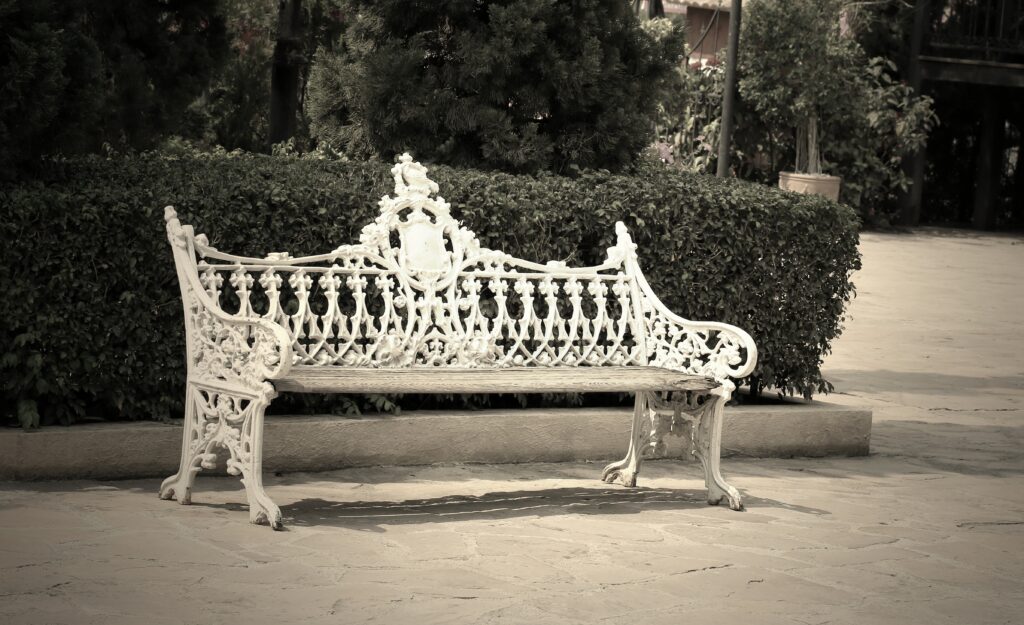
One of the leading purveyors of English outdoor furniture at the time was the Coalbrookdale Company of Shropshire, England. A family-owned company, founded in 1709, it was famed for its cast iron works. They first made sand-cast iron pots as well as producing parts for steam engines, and in the 1840s the company began developing lines of decorative, traditional garden furniture. Given its strength and resistance to rust, cast iron was ideal for pieces intended for outdoor use, it could last forever if cared for properly. And since it could be mass-manufactured, it was more economical than wrought iron. Coalbrookdale’s cast iron furniture is viewed as some of the finest and intricate ever made. Designs with Coalbrookdale roots dating back more than a century are still being produced today.
From the late 19th century until the mid 20th Century English garden furniture was mainly made from teak, wrought or cast iron, along with other non-lasting softwoods.
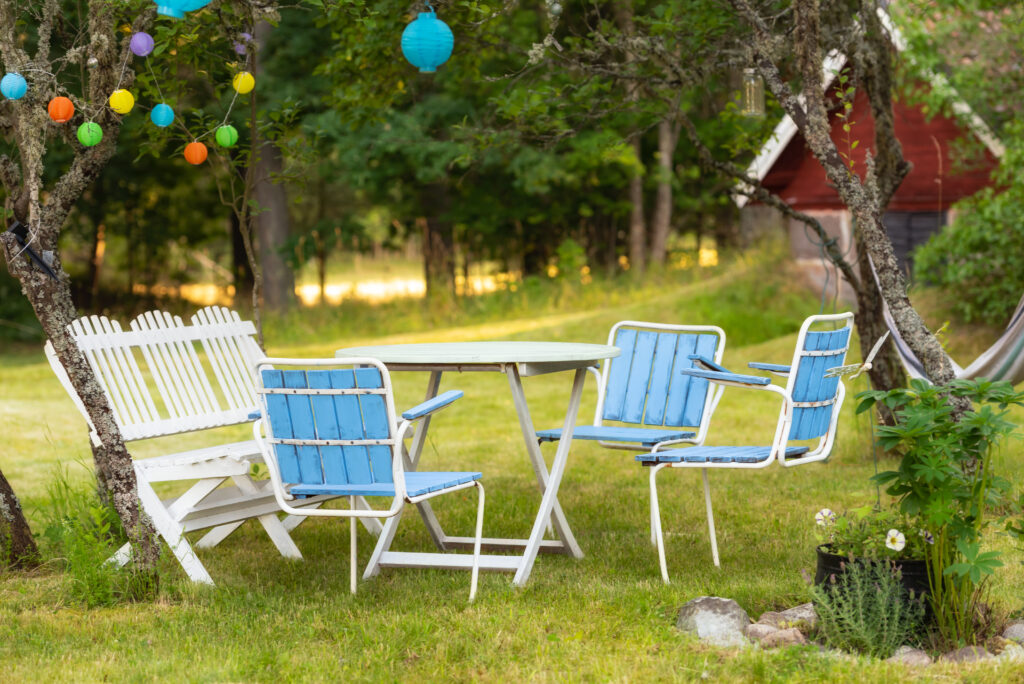 The massive abundance of choice in luxury garden furniture that we know today happened after the second world war with the widespread use of Aluminium and plastic. The use of Aluminium in making aircraft for the war meant that skill in casting and working it was abundant and those skills needed new avenues of work. Because aluminium, when properly treated, does not rust and is so light it was the ideal material for English outdoor furniture. In the 1960’s plastic garden furniture, considered deeply hip then, was mass produced on a vast scale and every garden of any size had it. As the 20th Century closed the use of mixed materials became a trend, using stainless steel with wood for instance.
The massive abundance of choice in luxury garden furniture that we know today happened after the second world war with the widespread use of Aluminium and plastic. The use of Aluminium in making aircraft for the war meant that skill in casting and working it was abundant and those skills needed new avenues of work. Because aluminium, when properly treated, does not rust and is so light it was the ideal material for English outdoor furniture. In the 1960’s plastic garden furniture, considered deeply hip then, was mass produced on a vast scale and every garden of any size had it. As the 20th Century closed the use of mixed materials became a trend, using stainless steel with wood for instance.
With the arrival of the 21st century the variety of garden furniture in so many materials seemed endless. You can even get copies of the original Roman benches! Sadly, most English outdoor furniture sold in the UK currently is plastic weave which is both unsustainable and unsightly!
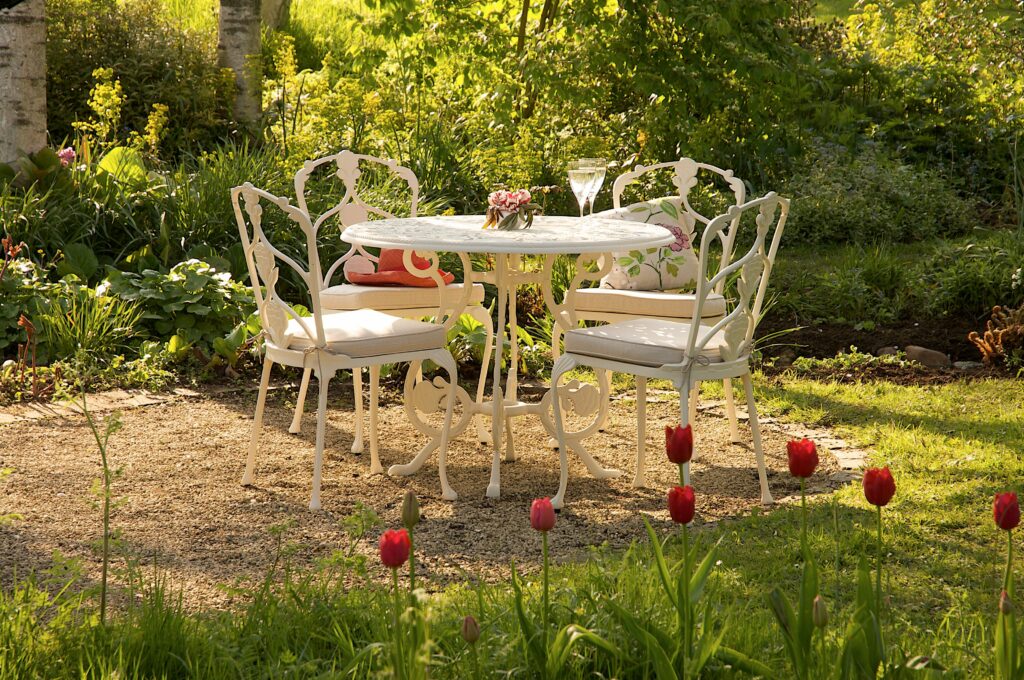
We specialise in making our furniture to customers requirements. Call us to turn your ideas into reality.
